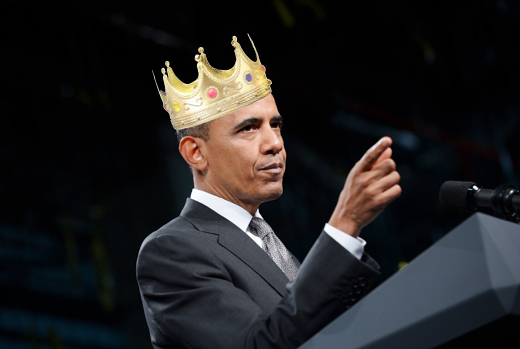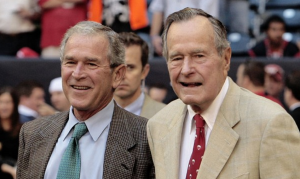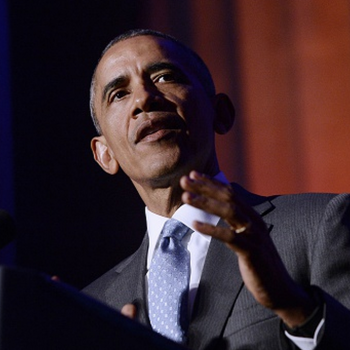The drone image was grainy, but clear enough to make out roughly 20 military-age males lounging around in a courtyard. Every now and again you’d see a small child run into the courtyard, then run back out again. Occasionally a woman could be seen, dressed in a burqa. She appeared to be preparing a meal. No one seemed to be carrying a weapon — at least none that we could see. To all appearances, it looked like a gathering of friends, men who were about to sit and enjoy their dinner.
Yet that was not just any courtyard — it was the known personal residence of a senior al-Qaeda commander in our Area of Operations, a residence that until that night had been deserted day after day, week after week. And the number of men roughly matched our estimate of the size of the local IED cells, plus the commander’s own small personal security detail.
No ground troops were within miles of the building, we had no helicopters to rapidly transport troopers to investigate and/or engage the occupants of the house, and the number of cars clustered around the courtyard indicated that the group could disperse quickly.
But a drone circled above, and the lives of everyone below hung on a thread.
My executive officer turned to me: “Well, David, what do you think?”
*** *** *** *** ***
Parsing through the rhetoric, there are really two drone debates in America. The first is a continuation and amplification of the domestic and international debate that began shortly after September 11, 2001. Is our fight against al-Qaeda a war or merely a long and complex police operation? In a police operation, each individual receives due process, killing occurs in self-defense only, and captives are tried in civilian courts using civilian rules of evidence. Collateral damage is wholly unacceptable and legally proper only if unavoidable in the context of a limited, self-defense-motivated kinetic operation. In other words, to the law-enforcement advocates, the War on Terror should be legally more like the “war on drugs” than, say, Desert Storm or the Vietnam War.
In a true military conflict, however, there is no “due process” as we think of the term. In fact, the only real due process that exists is the political process (typically a declaration of war or congressional authorization for the use of force) that commences hostilities. Positively identified enemy forces can then be killed in combat, while they are fleeing, while they are eating, or even while they are asleep. The ability to kill is limited by the laws of war, not by civilian legal standards, and the laws of war give a combatant state wide latitude to engage its enemy.
In the fight between those who argue for law enforcement and those who seek to wage war, drones are merely a convenient (and now high-profile) launching point for discussion. The problem isn’t really with the drone; it’s with the air strike — an unmistakable tactic of war.
The second debate is less over tactics and more about trust. There are many Americans who fully endorse the concept of a war against al-Qaeda, but they simply don’t want to see a government they mistrust abuse its war powers to create dangerous precedents for killing the innocent or disfavored. News reports that highlight the primacy of political leaders in targeting decisions (such as the now-famous New York Times “kill list” article) bring military targeting directly into the world of politics. The debate becomes less about the tactic itself than about the “Targeter-in-Chief” — President Obama.
The distrust is so extreme that some critics (even those who are otherwise clear about the nature of our national-security threats and the need to use robust military force) are willing to overturn the constitutionally mandated military command structure and establish civilian judicial oversight.
For this mistrust, President Obama has mainly himself to blame. By personalizing drone strikes — while selective and opportunistic security leaks cast him as a kind of philosopher-king, reading Aquinas as he delivers kill orders — he inevitably politicized a sound and rather conventional military tactic. In our hyper-polarized times, the thought of a president with a “kill list” that even includes fellow Americans is simply a bridge too far.
Moreover, putting targeting in the hands of politicians feeds the narrative of the law-enforcement advocates. If we’re in a true military conflict, why isn’t the military deciding whom to strike and when? If we have the time to elevate a strike decision all the way to the White House, isn’t there also time for judicial oversight? After all, a politician can hardly claim more military competence than a judge.
While the law-enforcement/war debate can’t truly be settled by reforming the drone program, a few simple reforms can introduce greater clarity and transparency, eliminate much of the politically created atmosphere of mistrust, and improve the military efficiency and effectiveness of the program itself. I suggest three steps:
First, clarify the conflict’s status through new legislation. Andrew McCarthy and other informed critics of the administration’s drone program are correct that the current legislative framework for the conflict is in desperate need of update and reform. The original Authorization for Use of Military Force (AUMF) — enacted in the fog of war following 9/11 — clearly creates a state of military conflict, but is excessively ambiguous about the belligerents, or at least excessively ambiguous in light of the war’s developments over the last decade-plus.
The drawdown from Afghanistan presents an opportunity to update and revise the AUMF not only to clearly identify the targets of our ongoing military effort but also to establish a relatively transparent process for determining when closely aligned jihadist groups can also become Declared Hostile Forces and thus targetable under wartime Rules of Engagement.
We already have a political process for designating Foreign Terrorist Organizations, and statutorily creating a more rigorous process for designating Declared Hostile Forces would mitigate concerns of unending war against undefined enemies. At the same time, however, the legislation should not limit the Commander-in-Chief’s inherent ability to respond rapidly to truly “imminent” military threats (regardless of source) as they arise.
Second, militarize the targeting process. It is imperative that civilian decision-makers be largely removed from the targeting decision-making process. While there are certainly decisions that only the president can make (such as the decision to begin an aerial campaign over the sovereign territory of another nation), as a general rule, the drone campaign should be conducted by military authorities, with civilian accountability for its overall success and failure, not with civilian control of the individual strikes themselves. In other words, it should be conducted more like a conventional military campaign and less like a series of presidential execution orders.
In fact, even CIA strikes should be conducted under ultimate military oversight, and the bias should be in favor of using military assets except when diplomatic or military necessity requires CIA drones. By replacing the mistrusted (and less competent) politicians with seemingly the only trusted public institution in the United States (the military), we will not only improve the campaign’s effectiveness; we will remove it further from partisan politics and partisan rancor.
Third, denationalize the targeting. Simply put, citizenship should be irrelevant when targeting members of Declared Hostile Forces, and it’s always irrelevant when targeting in pure self-defense. In Ex Parte Quirin, the Supreme Court was quite clear:
Citizenship in the United States of an enemy belligerent does not relieve him from the consequences of a belligerency which is unlawful because in violation of the law of war. Citizens who associate themselves with the military arm of the enemy government, and, with its aid, guidance and direction, enter this country bent on hostile acts, are enemy belligerents within the meaning of the Hague Convention and the law of war.
The administration’s now-infamous white paper goes too far in providing special targeting protections for American citizens. Creating a partially immune class of American super-terrorists is militarily foolish and wholly unnecessary under the Constitution. The Fifth Amendment, after all, on its face makes no distinctions between citizens and non-citizens, and the legislative declaration of war is all the “process” due an enemy belligerent.
At the same time, we should amend the Immigration and Nationality Act to strip citizenship from those who enter or serve any armed force (state or non-state) engaged in armed conflict (as designated by Act of Congress) against our nation. Currently, the law strips citizenship from those who serve in the “armed forces” of another state, yet for most of the last decade our military effort has been concentrated against non-state terrorist organizations.
While there should be transparency in the classification and designation of Declared Hostile Forces — those forces that can be targeted under the laws of war — calls for greater transparency in the individual targeting process are highly problematic. Individual targeting decisions tend to be based on sources of information and understandings of enemy behavior that we simply cannot publicly disclose without imperiling those sources or alerting our enemies of the necessity of changing their behavior.
No targeting process is perfect, but our military has long experience in identifying and engaging terrorists, with an extraordinarily low ratio of civilian casualties — a ratio unprecedented in warfare. Further civilian involvement is more likely to impair the targeting process than improve it.
*** *** *** *** ***
I believed there was sufficient evidence for a strike, but no one died that night in Diyala Province, Iraq — or, more precisely, no one died in that courtyard. The command decided against an attack. There were explosions and death elsewhere, as bombs planted by terrorists claimed civilians and soldiers alike. Should those men in the courtyard have lived or died? Had they died, would others have lived?
Those are the questions of the drone campaign. They are not questions for a politician, but questions, ultimately, for a warrior — a warrior who knows the terrain and the population and who knows what it means to take life, to risk his own, and to save others.
We’re at war. And in war we trust our men and women in uniform — unless and until they prove unworthy of that trust. So far, they have proven more worthy of that trust than our politicians.
This post first ran at National Review Online.
Follow David on Facebook and Twitter, and read more of the French Revolution blog.










